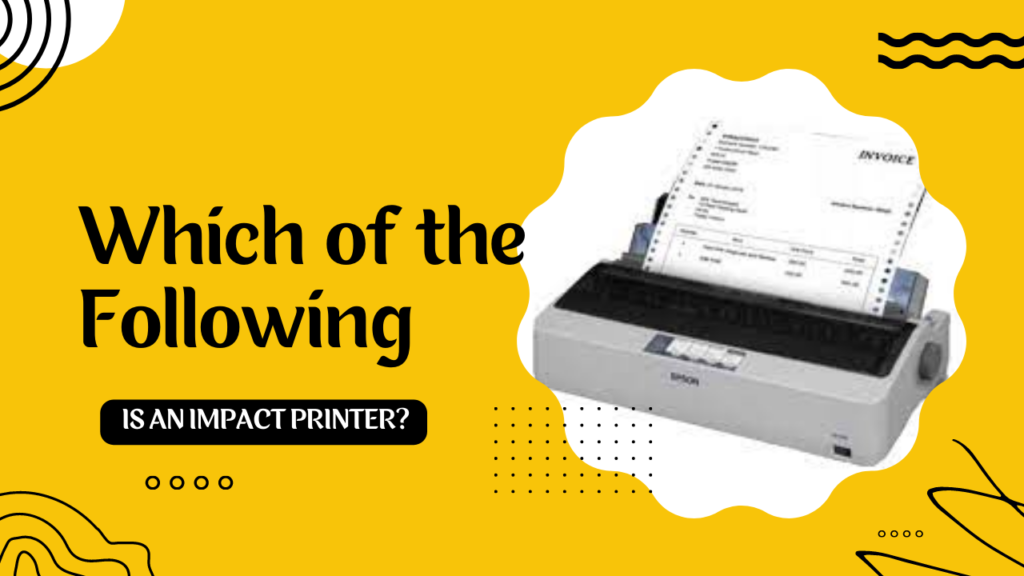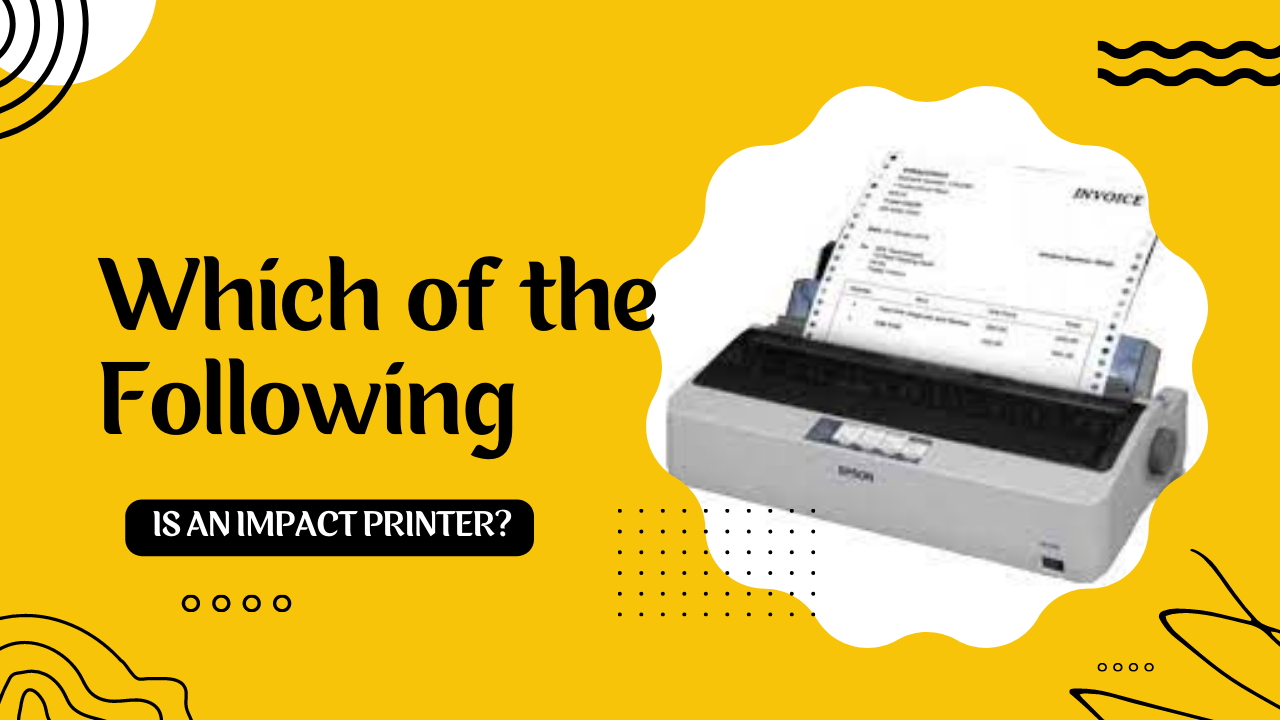Which of the Following is a Non-Impact Printer?

Introduction
In the world of printing technology, there are various types of printers available, each with its own unique features and advantages. One common question that often arises is, “Which of the following is a non-impact printer?” In this article, we will delve into the concept of non-impact printers, explore their functionalities, and shed light on their significance in today’s digital age.
Understanding Non-Impact Printers
Non-impact printers are a type of printing device that does not involve any physical contact between the printing mechanism and the printing surface. Unlike impact printers, which rely on direct contact to create an image, non-impact printers utilize different techniques to reproduce text and graphics. These printers are generally quieter, faster, and more efficient than their impact counterparts.
The Advantages of Non-Impact Printers
Non-impact printers offer several advantages over impact printers. Let’s take a closer look at some of the key benefits they bring to the table:
- Quiet Operation: One significant advantage of non-impact printers is their quiet operation. Since they do not rely on striking the paper, the noise level is significantly lower compared to impact printers. This makes them suitable for environments where noise reduction is important, such as offices and libraries.
- High-Speed Printing: Non-impact printers are known for their high printing speed. They can produce documents at a much faster rate compared to impact printers, making them ideal for large-scale printing tasks.
- Superior Print Quality: Non-impact printers excel in producing high-quality prints. They can create crisp and precise images with fine details, resulting in professional-looking documents.
- Versatility: These printers are versatile in terms of the media they can handle. They can accommodate a wide range of paper sizes, types, and textures, making them suitable for various printing requirements.
- Lower Maintenance: Non-impact printers require less maintenance compared to impact printers. Since they do not involve physical contact, there are fewer components that can wear out or become damaged over time. This reduces the need for frequent repairs and replacements.
Types of Non-Impact Printers
There are several types of non-impact printers, each utilizing different technologies to create prints. Let’s explore some of the most common ones:
1. Inkjet Printers
Inkjet printers are a popular type of non-impact printer that works by propelling tiny droplets of ink onto the paper. These printers are known for their versatility and ability to produce high-resolution prints. They are widely used for both text and photo printing.
2. Laser Printers
Laser printers utilize laser technology to create prints. They use a laser beam to form an image on a drum, which is then transferred onto the paper using toner. Laser printers are known for their exceptional speed and high-quality output, making them suitable for both home and office use.
3. Thermal Printers
Thermal printers generate prints by applying heat to special thermal paper. The heat activates the chemicals on the paper, resulting in the formation of text or images. Thermal printers are commonly used in applications such as receipt printing and barcode labeling.
4. Dye-Sublimation Printers
Dye-sublimation printers work by transferring dye onto a medium, such as paper or plastic, using heat. The dye is first transferred to a ribbon, and then onto the printing surface. These printers are commonly used for high-quality photo printing and are favored by professional photographers.
Frequently Asked Questions (FAQs)
Q: How does an inkjet printer work?
A: Inkjet printers work by propelling small droplets of ink onto the paper through tiny nozzles. The ink cartridges contain liquid ink, which is sprayed onto the paper in precise patterns to create the desired text or image.
Q: What is the advantage of using a laser printer over an inkjet printer?
A: Laser printers offer faster printing speeds and higher print quality compared to inkjet printers. They are also more cost-effective for high-volume printing tasks.
Q: Can non-impact printers print in color?
A: Yes, non-impact printers, such as inkjet and laser printers, are capable of printing in color. They use different color cartridges or toner cartridges to produce vibrant and accurate colors.
Q: Are non-impact printers suitable for professional graphic design work?
A: Yes, non-impact printers, particularly high-quality inkjet and laser printers, are well-suited for professional graphic design work. They can reproduce fine details and vibrant colors accurately, making them ideal for creating visually appealing designs.
Q: How long does the printout from a thermal printer last?
A: The printout from a thermal printer is generally not as durable as prints from other types of printers. The heat-sensitive chemicals on the thermal paper may fade over time, particularly when exposed to sunlight or heat.
Q: Can I use non-impact printers for printing photographs?
A: Yes, non-impact printers, such as inkjet and dye-sublimation printers, are commonly used for printing photographs. They can produce high-resolution prints with accurate color reproduction, resulting in stunning photo prints.
How to Connect Roku TV to Computer with HDMI
Can You Use a Laptop Motherboard in a Desktop?
How to Switch to HDMI on PC Windows 10?
Conclusion
In conclusion, non-impact printers play a crucial role in modern printing technology. They offer numerous advantages over impact printers, including quiet operation, high-speed printing, superior print quality, versatility, and lower maintenance requirements. Inkjet printers, laser printers, thermal printers, and dye-sublimation printers are some of the common types of non-impact printers available in the market. Understanding the differences between these printers can help you make an informed decision based on your specific printing needs. Embrace the power of non-impact printers for efficient and high-quality printing experiences.
